Fall Foliage Japan Private Tour
Local Time
Why You Should Go
As one of our absolute favorite destinations anywhere in the world, the fall foliage season in Japan, lasting from late September to mid-December, is truly a sight to behold. Rivaling the spring Sakura (cherry blossom) season, the fall season is the second most popular time to travel to the island and portrays radiant shades of red, orange, yellow, and brown. This wave of seasonal change begins on the northern island of Hokkaido and slowly makes its way southward until it reaches the lower elevations of central and southern Japan. Japan is arguably the most beautiful during kōyō when the fall leaves reach their peak vibrant colors. Many tourists and locals alike enjoy appreciating the beauty this time of year brings by traveling to locations that have particularly stunning portrayals of the fall leaves, an activity known as Momijigari (紅葉がり). To accentuate the natural colors of nature, many temples and gardens also provide beautiful evening illuminations. With low rainfall and welcoming weather conditions peaking in the low 70s, this makes for comfortable touring conditions and less likelihood of needing an umbrella. We wholeheartedly encourage seeing the country this time of year to bask in the lovely Japanese blue skies and crisp autumn air, while getting a whiff of the roasted yakiimo that fills the streets with a sweet, burnt aroma.
Another Japan travel perk: no visas, no shots, no pills necessary!
Best Travel Time: Fall
*All of our comprehensive private tour itineraries are inclusive of all luxury accommodations, private guide/driver throughout, daily meals as specified, INTERNAL flights/rail /private transfers as needed, & all taxes/service fees.
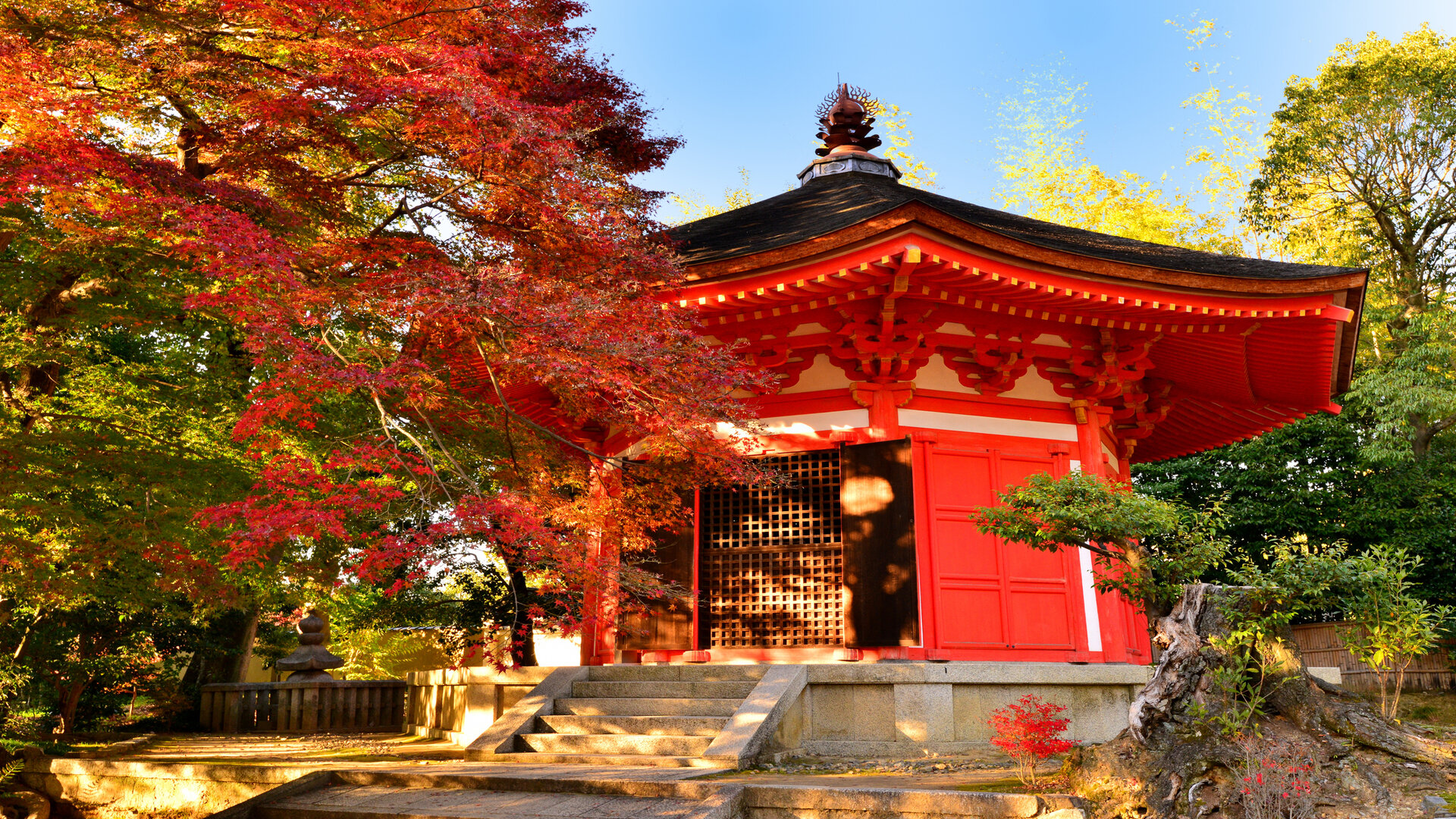
Sample Itinerary
16 Days
Each private luxury tour is custom to the wishes of each client. This itinerary is a sample. Partnering with our long-established relationship with United Airlines, our sister company, TRAVNET, may provide competitive Polaris/Business Class international airfare, along with mileage points conversion.
Day 1
Fly to Tokyo
Through our sister company, premium air provider TRAVNET, we may assist with your international airfare, as well as with mileage points conversion.
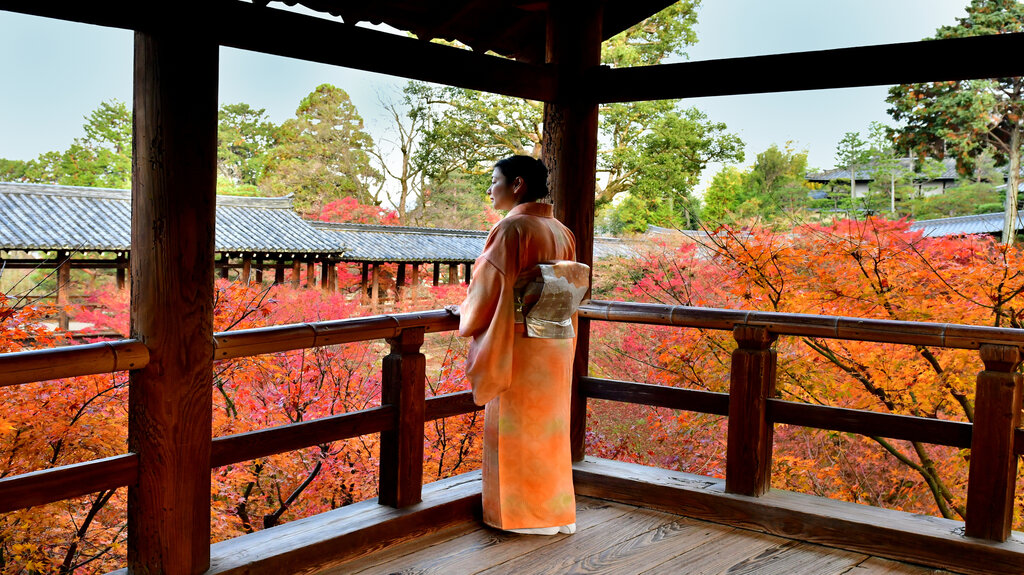
Day 2
Arrive Tokyo + Private Transfer to Hotel
Upon arrival in Tokyo, you will be privately transferred to your hotel. The remainder of your day is at leisure to relax after your international flight.
Accommodations: Aman Tokyo or The Peninsula Tokyo
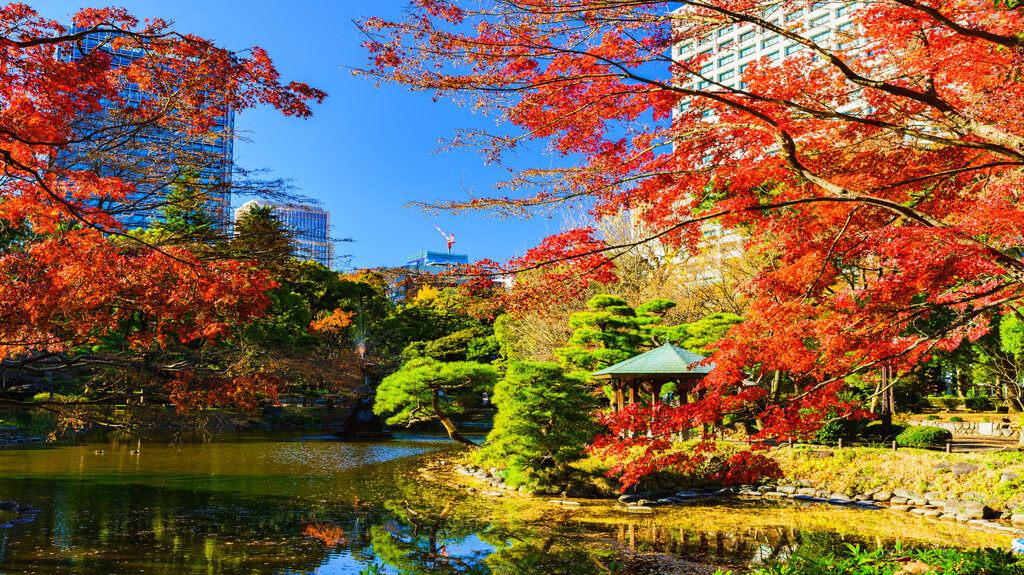
Day 3-4
Tokyo Private Touring
Enjoy two full days privately touring the magnificent city of Tokyo! Visit the Meiji Shrine, where, based on Shinto tradition, you may write your prayer on a wooden block just outside of the shrine. You may also visit Higashi Gyoen, the east garden at the Imperial Palace, considered to be one of the most beautiful gardens in Tokyo. Further touring options include Akihabara, the eccentric Harajuku shopping district, and Yasukuni Shrine — controversial due to its enshrinement of Japan’s wartime leader General Hideki Tojo and 13 other Class-A war criminals (found guilty of war crimes by the allied forces after World War II).
Meals: Breakfast
Accommodations: Aman Tokyo or The Peninsula Tokyo
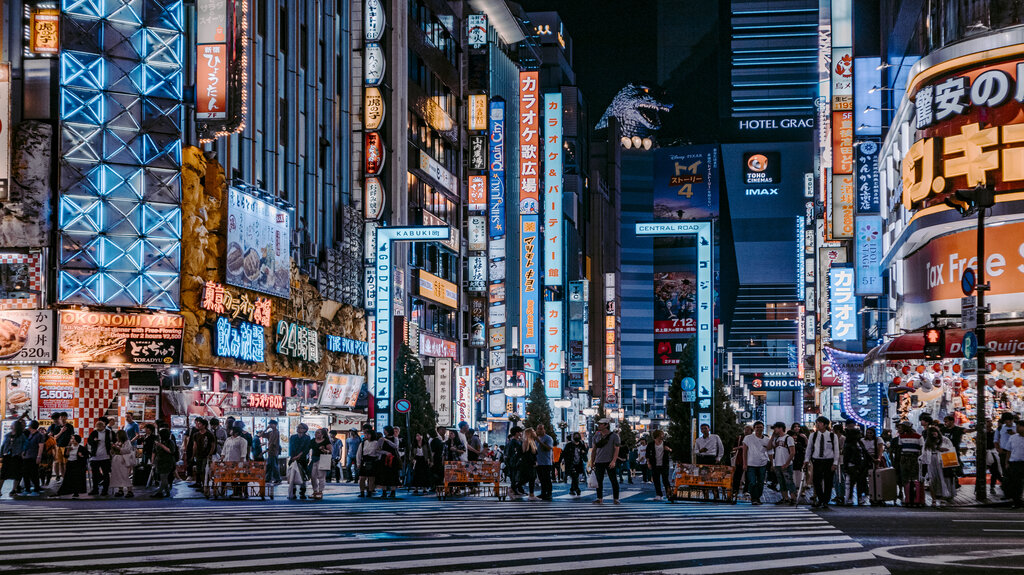
Day 5
Private Transfer Tokyo/Mt. Fuji/Hakone
Today, you will travel to the Mt. Fuji visitor’s station and be guided to the fifth station on the mountain for the opportunity to hike the Ochudo Trail. The Ochudo Trail is a walking path that circles Mt. Fuji halfway up the mountainside. This trek, also known as the “boundary between heaven and earth,” includes the Oniwa Garden and ends at the Okuniwa bus stop. This hike is roughly 2.5 miles and will take approximately two hours. Following your energizing hike, you will be driven to the traditional ryokan, Gōra Kadan.
Meals: Breakfast & Kaiseki Dinner
Accommodations: Gōra Kadan
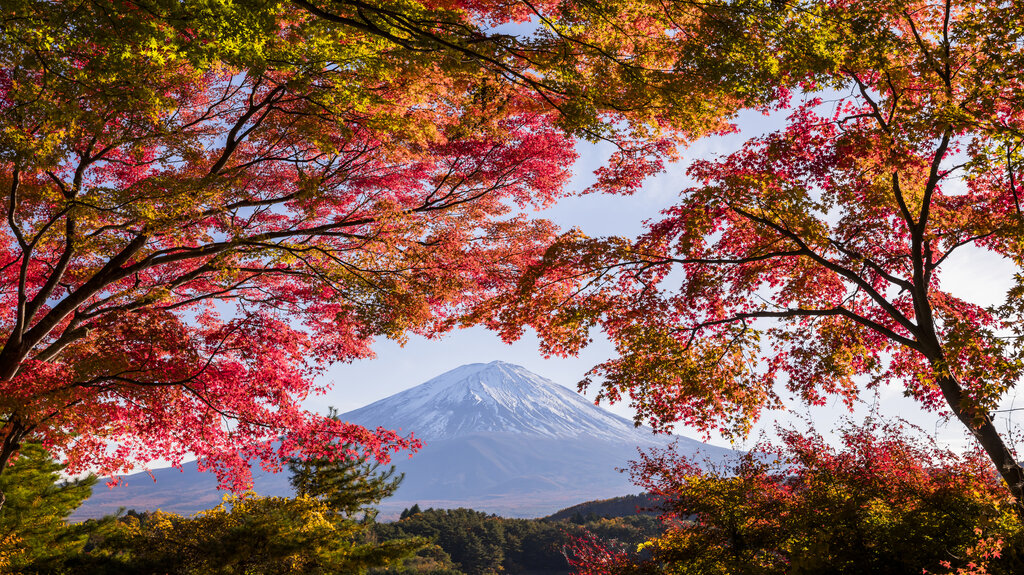
Day 6
Hakone Private Tour
Following breakfast at the Gora Kadan, your private tour options will include a Lake Ashi boat excursion, Jinja Shrine, and the Owakudani Valley, an active volcanic valley famous for black boiled eggs! Another stopover will be the Hakone Open Air Museum amidst a mountain setting, which successfully balances art with nature. For a bit of adventure, we recommend the Hakone Ropeway, a popular way to visit the city from the vantage point of a cable car!
Meals: Breakfast & Kaiseki Dinner
Accommodations: Gōra Kadan
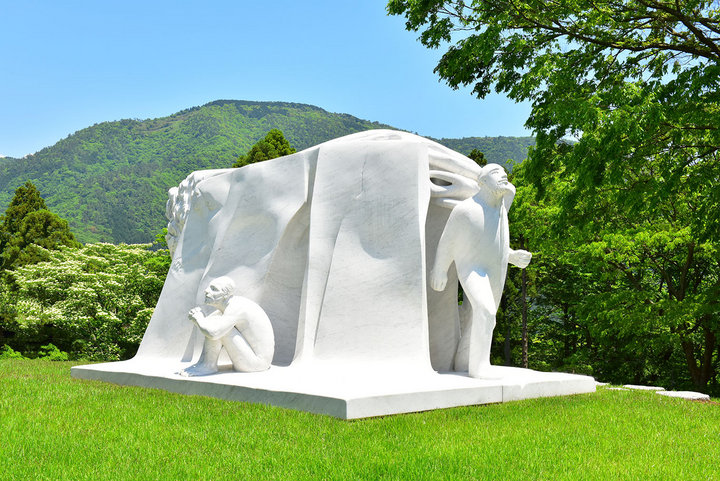
Day 7
Shinkansen (Bullet Train) Odawara to Kyoto
Following breakfast, you will be privately transferred to the station and assisted by our representative in boarding the Shinkansen from Odawara to Kyoto (this train journey is approximately two hours).
Upon arrival at Kyoto Station, privately transfer to your hotel for check-in. Later this evening, you will meet a representative in the lobby and embark on an evening walking tour of Shirakawa Minami-dori in the Gion area. Unlike much of Kyoto, this dori (street) is free of telephone poles and unsightly overhead wires. Running alongside the Shirakawa River, marvel at the pristinely preserved wooden structures and willow trees.
Meals: Breakfast
Accommodations: Ritz-Carlton Kyoto or Aman Kyoto
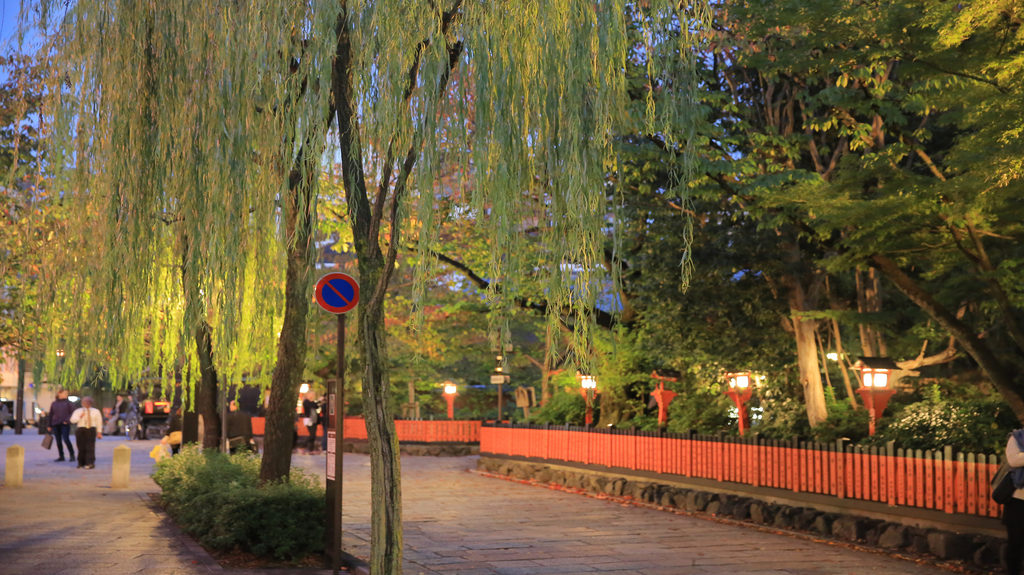
Days 8-9
Kyoto Private Touring
Enjoy two full days of exploring the city of Kyoto with your private guide. On your first day, perhaps begin with Philosopher’s Walk, a 1.2-mile-long path that covers five temples and two shrines, paralleling a beautiful canal. After the walk, you can continue to Ginkakuji Temple, built by Shogun Ashikaga Yoshimasa as his retirement villa. Perhaps our favorite shrine in all of Japan, the Fushimi Inari Taisha Shrine is the most notable attraction in Kyoto. Dating back to the eighth century, the shrine includes a wandering pathway around three miles up the mountain lined with hundreds of beautiful red torii (gates found at the entrance of sacred sites) now faded with a muted red-orange color. The Higashiyama District and dinner at the Michelin-starred Cenci are also on the list for today.
On another day, consider a visit to Saiho-ji Temple and its garden. You may visit by prior appointment only via a written request to the administering monks. Unlike the mass tourism that envelops much of Kyoto, the Saiho-ji priests hope to retain a solemn, meditative atmosphere in the temple and gardens. After this special experience, the day will be completed with lunch at the centuries-old noodle shop, Honke Owariya, and the Arashiyama district including Togetsu-kyo Bridge, Bamboo Grove, and Tenryuji Temple (UNESCO World Heritage Site).
Meals: Breakfast
Accommodations: Ritz-Carlton Kyoto or Aman Kyoto
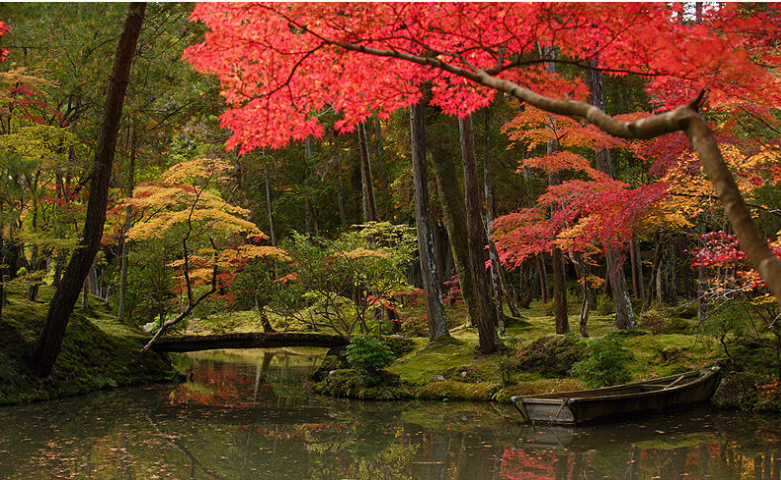
Day 10
Master’s Tea Ceremony + Todaiji Temple/Nara Deer Park
Your day begins with a traditional matcha tea ceremony with over a dozen steps including the respectful exchange of greetings, nibbling on the accompanied sweets, and expertly mixing the the matcha powder with a handmade bamboo whisk. Following the careful instruction of the tea master, Suzuki-san, you should be taken with the simplicity and beauty of preparing, serving, and drinking tea. Afterward, make your way just outside the city to visit Todaiji (Great Eastern Temple) and Nara Deer Park. Todaiji was constructed in 752 as the head temple of all Japanese provincial Buddhist temples. Not only does Todaiji contain Japan’s largest Buddhist statue, but it is also the world’s largest wooden building. Nara Park, adjacent to Todaiji, is a large, beautiful park noted for hundreds of freely roaming deer. The deer are considered messengers of the Shinto gods and a national treasure of Nara. The day ends at Hiiragiya Ryokan, considered among the most noteworthy and famous ryokans in all of Japan. We feel that a stay at Hiiragiya represents a complete immersion into traditional Japanese culture.
Meals: Breakfast
Accommodations: Hiiragiya Ryokan
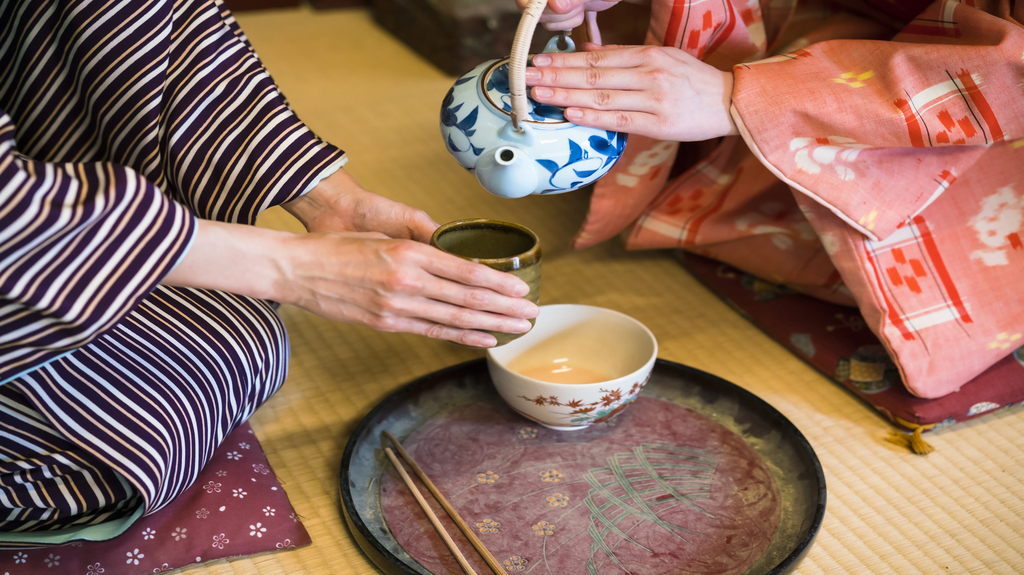
Day 11
Shinkansen Kyoto/Hiroshima + Hiroshima Peace Memorial Park & Museum Private Tour
Following breakfast, you will be privately transferred to the train station and assisted in boarding the Shinkansen train from Kyoto to Hiroshima (the journey is just over 1.5 hours).
Upon arrival in Hiroshima, your private guide will take you to Peace Memorial Park & Museum. A simultaneously moving and disturbing experience, this visit should be historical and eye-opening. The Peace Memorial Museum graphically illustrates the history of the atomic bomb and its dramatic effects on the citizens of Hiroshima (August 6, 1945).
Meals: Breakfast
Accommodations: Sheraton Grand Hiroshima Hotel
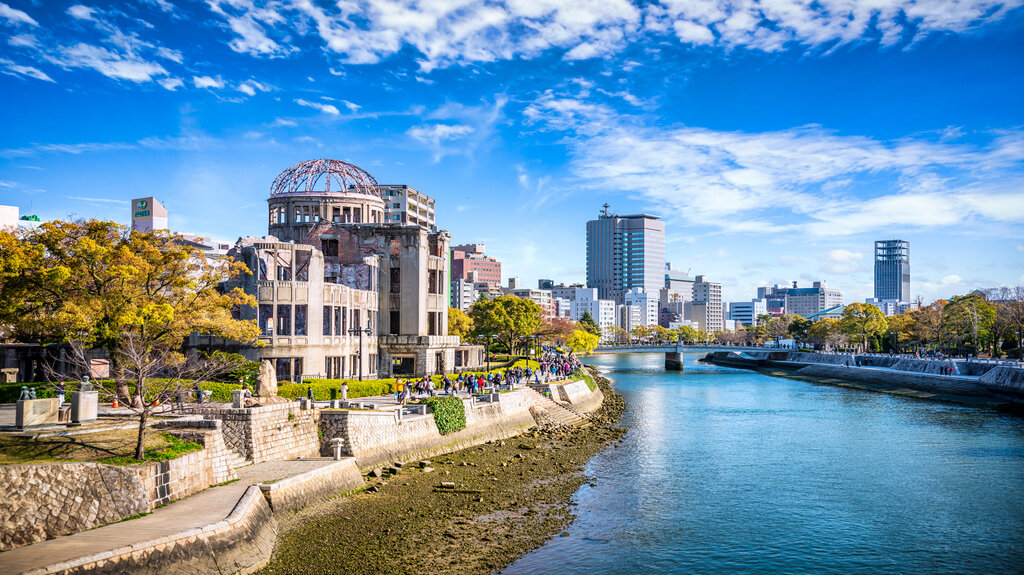
Day 12
Miyajima Island Private Tour
Today, board a ferry to Miyajima Island, considered one of Japan’s three most scenic views (a UNESCO World Heritage Site!). It is famous for the Itsukushima Shrine, which, together with its large wooden torii (gate), stands in the ocean during high tide. Deer roam around the island freely, as do monkeys on top of Misen, the island’s largest mountain. You will have the opportunity to enjoy the sunset on the island before a ferry returns you to Hiroshima.
Meals: Breakfast
Accommodations: Sheraton Grand Hiroshima Hotel
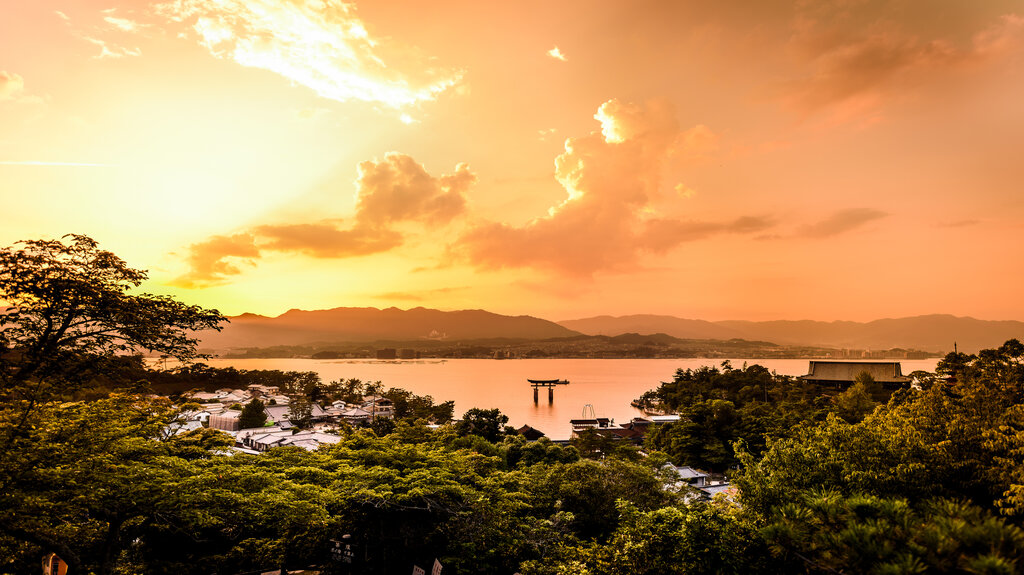
Day 13
Shinkansen Hiroshima/Okayama + Ferry to Naoshima Island
In the morning, privately transfer to the train station where you will be assisted with boarding a Shinkansen to Okayama (approximately 30 minutes). Upon arrival, you will be met by a representative and privately transferred to Uno Port for a ferry ride to Benesse House on Naoshima.
Naoshima is a somewhat remote island located in the Seto Inland Sea of Japan and is famous for its striking architecture, art museums, and many unusual sculptures. Benesse House exists in harmony with the nature around it, having been built mostly underground so as not to impose too much on the surrounding landscape. Despite its almost completely underground location, the museum gets plenty of natural light exposure, providing varying experiences with the art contained within, depending on the time of day and season of the year.
Meals: Breakfast
Accommodations: Benesse House Hotel
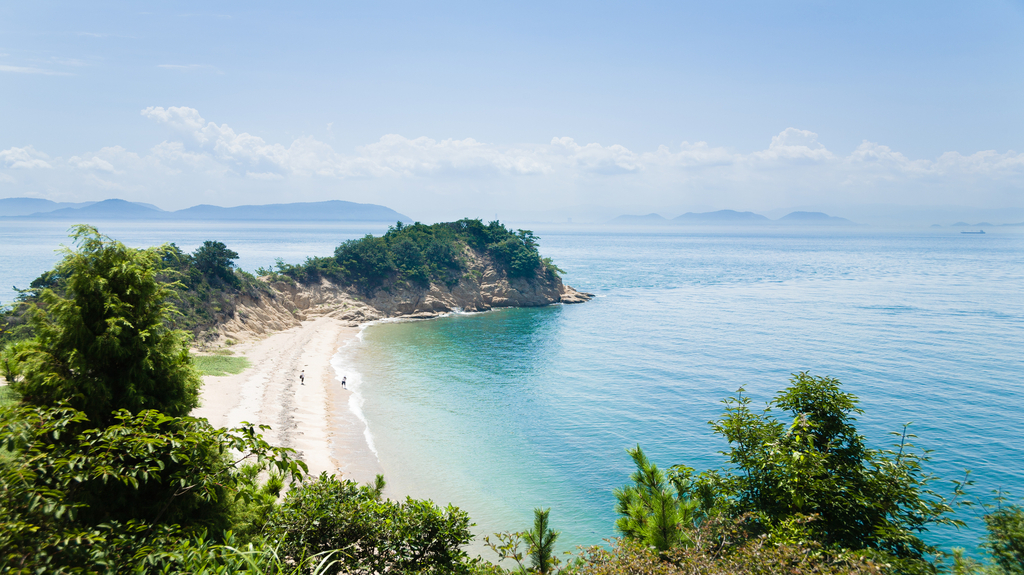
Day 14
Naoshima Private Tour
Following breakfast, you will enjoy a full-day private tour of Naoshima including the Chichu Art Museum, Lee Ufan Museum, and the Art House Project. All a part of the Benesse Art Site, this site aims to create significant spaces by bringing contemporary art and architecture in resonance with the pristine nature of the Seto Inland Sea.
Meals: Breakfast
Accommodations: Benesse House Hotel
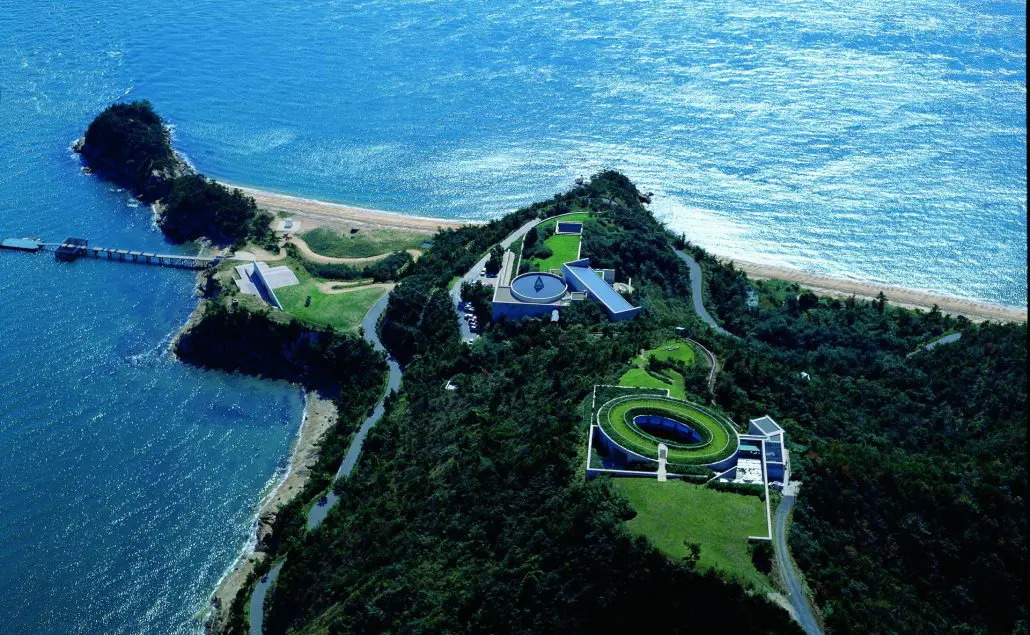
Day 15
Ferry to Uno Port + Shinkansen to Tokyo
Following breakfast, you will be assisted in boarding your ferry to Uno Port, where you will be met and driven to Okayama Station for your Shinkansen to Tokyo (the journey is approximately three hours). You will be met at Tokyo Station and privately transferred to your hotel. Time permitting, enjoy one last meal in Tokyo at Narisawa. Intertwining nature and sustainability with gastronomy, Narisawa has a unique take on the Japanese dining experience. With a theme emphasizing coexistence with forests, Chef Yoshihiro believes “it is the duty of a chef to not only prepare food but to preserve the wilderness ecosystem.”
Meals: Breakfast
Accommodations: Aman Tokyo or The Peninsula Tokyo
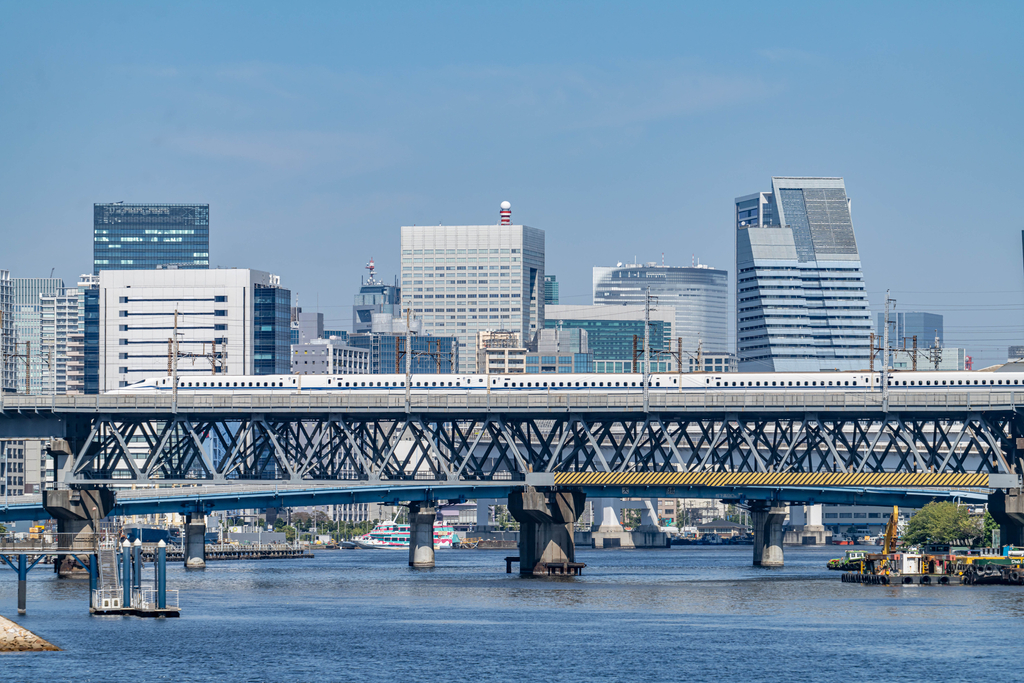
Day 16
Transfer to Airport + Fly Tokyo/Home
Following breakfast, privately transfer to the airport for your flight home. Safe travels!
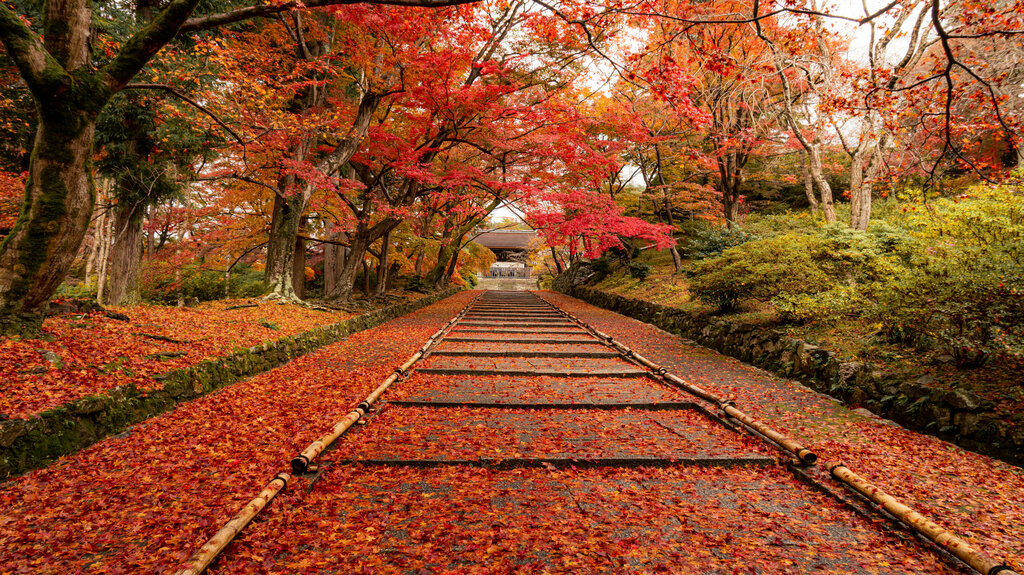
Hotels

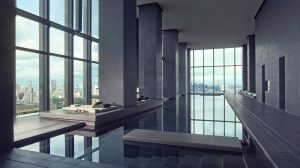
Though we are big fans of Aman in China and Southeast Asia, we initially felt a bit ambivalent about the 84-room Aman in a noisy, urban environment like Tokyo. Located in the 40-story Otemachi Tower, within walking distance of Ginza shopping and dining and the Otemachi Forest (Marunouchi’s Naki-Dori tree-lined avenue), perhaps the most impressive sight of the Aman Tokyo is its magnificent 33rd-floor lobby entrance featuring huge floor to ceiling windows with a view of the Imperial Palace grounds and even Mt. Fuji on clear days! The Shoji-lanterned area is centered on a large garden and a washi-like ceiling that gives the area a Zen-like Japanese feel. Many clients feel the views from the lap pool to be among the best in the world! Unlike Aman’s in most parts of the world that ban TVs in the rooms, the Aman Tokyo includes a flat-screen TV for those of us who need a daily BBC fix!
Aman Tokyo

Though we are big fans of Aman in China and Southeast Asia, we initially felt a bit ambivalent about the 84-room Aman in a noisy, urban environment like Tokyo. Located in the 40-story Otemachi Tower, within walking distance of Ginza shopping and dining and the Otemachi Forest (Marunouchi’s Naki-Dori tree-lined avenue), perhaps the most impressive sight of the Aman Tokyo is its magnificent 33rd-floor lobby entrance featuring huge floor to ceiling windows with a view of the Imperial Palace grounds and even Mt. Fuji on clear days! The Shoji-lanterned area is centered on a large garden and a washi-like ceiling that gives the area a Zen-like Japanese feel. Many clients feel the views from the lap pool to be among the best in the world! Unlike Aman’s in most parts of the world that ban TVs in the rooms, the Aman Tokyo includes a flat-screen TV for those of us who need a daily BBC fix!

 The 24-story Peninsula has the best luxury hotel location in Tokyo, directly across from the lovely Hibiya Park (think 5K run!), Imperial grounds, and adjacent to the amazing Ginza shopping district. Envisioned by architect Kuzukiyo Sato to look like a giant Japanese stone lantern, the freestanding Peninsula combines subtle Japanese hospitality with the Peninsula tradition of understated luxury. The rooms are among the largest in Tokyo, starting at 544 sq. feet. Cool amenities range from bedside consoles that control the drapes to Lavazza espresso machines. The rooms even offer a personal nail dryer! For our jogging friends, The Peninsula offers a nice 5K start to your day. Beginning across the street on the Imperial Palace’s grounds, a full 5K jog runs through the grounds and back through Hibiya Park. Zen rates the hot chocolate and the Peninsula’s amazing “vitality” pool as the best in all of Japan!
The 24-story Peninsula has the best luxury hotel location in Tokyo, directly across from the lovely Hibiya Park (think 5K run!), Imperial grounds, and adjacent to the amazing Ginza shopping district. Envisioned by architect Kuzukiyo Sato to look like a giant Japanese stone lantern, the freestanding Peninsula combines subtle Japanese hospitality with the Peninsula tradition of understated luxury. The rooms are among the largest in Tokyo, starting at 544 sq. feet. Cool amenities range from bedside consoles that control the drapes to Lavazza espresso machines. The rooms even offer a personal nail dryer! For our jogging friends, The Peninsula offers a nice 5K start to your day. Beginning across the street on the Imperial Palace’s grounds, a full 5K jog runs through the grounds and back through Hibiya Park. Zen rates the hot chocolate and the Peninsula’s amazing “vitality” pool as the best in all of Japan!
The Peninsula Tokyo
 The 24-story Peninsula has the best luxury hotel location in Tokyo, directly across from the lovely Hibiya Park, Imperial grounds, and adjacent to the amazing Ginza shopping district. Envisioned by architect Kuzukiyo Sato to look like a giant Japanese stone lantern, the freestanding Peninsula combines subtle Japanese hospitality with the Peninsula tradition of understated luxury. The rooms are among the largest in Tokyo, starting at 544 sq. feet. Cool amenities range from bedside consoles that control the drapes to Lavazza espresso machines. The rooms even offer a personal nail dryer! For our jogging friends, The Peninsula offers a nice 5K start to your day. Beginning across the street on the Imperial Palace’s grounds, a full 5K jog runs through the grounds and back through Hibiya Park. Zen rates the hot chocolate and the Peninsula’s amazing “vitality” pool as the best in all of Japan!
The 24-story Peninsula has the best luxury hotel location in Tokyo, directly across from the lovely Hibiya Park, Imperial grounds, and adjacent to the amazing Ginza shopping district. Envisioned by architect Kuzukiyo Sato to look like a giant Japanese stone lantern, the freestanding Peninsula combines subtle Japanese hospitality with the Peninsula tradition of understated luxury. The rooms are among the largest in Tokyo, starting at 544 sq. feet. Cool amenities range from bedside consoles that control the drapes to Lavazza espresso machines. The rooms even offer a personal nail dryer! For our jogging friends, The Peninsula offers a nice 5K start to your day. Beginning across the street on the Imperial Palace’s grounds, a full 5K jog runs through the grounds and back through Hibiya Park. Zen rates the hot chocolate and the Peninsula’s amazing “vitality” pool as the best in all of Japan!
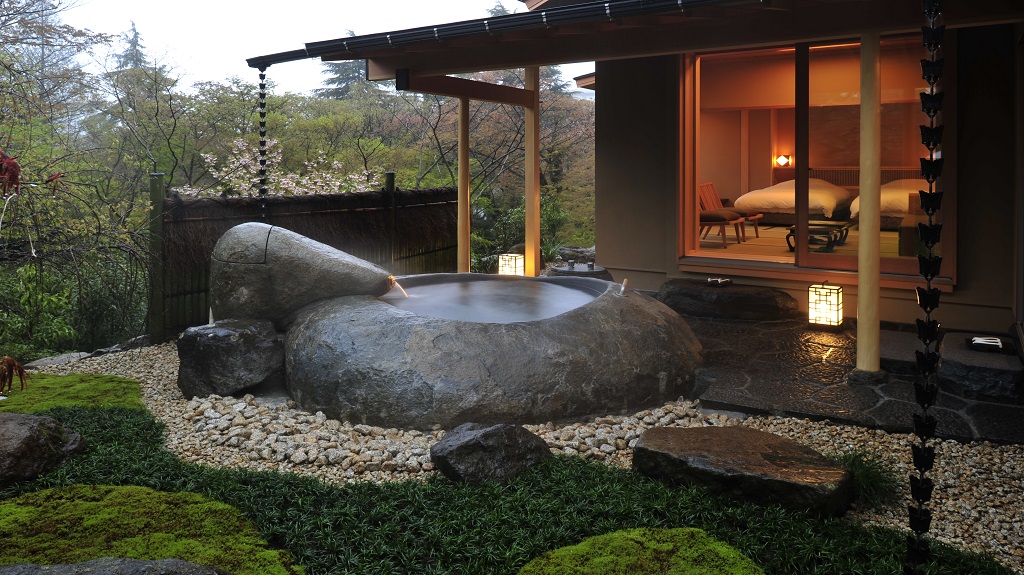
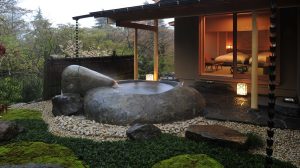
Gōra Kadan is a superb ryokan (traditional inn) that has managed to compromise gracefully with the modern Western world. Proprietress Mikawako, the third generation of Fujimotos to run Gōra Kadan, has blended traditional Japanese ryokan hospitality with modern, Western elements such as an ensuite bathroom, a television, and Wi-Fi/Bluetooth capability — all rare features in ryokans as these stays emphasize a disconnect from technology. The Gōra Kadan’s original building dates back 300 years and was the summer home of the Kan’in-No-Miya imperial family. The fusion of repurposing a former imperial structure into a luxury accommodation creates a lavish, restful ryokan spa experience. The Bettei suite is our absolute favorite here. The suite features not only a traditional tatami sleeping room, but also a living room, sitting room, private Japanese garden, and a private open-air stone bath for soaking.
Gora Kadan is part of our A-list for high-touch ryokans in Japan, with its airy, East-West fusion details, its wonderful Kaiseki multi-course dining experience, and total relaxation spa. Not to mention a sighting of a real-life A-lister, supermodel, Kate Moss, on our last visit to Gora Kadan!
Gōra Kadan
 Gōra Kadan is a superb ryokan (traditional inn) that has managed to compromise gracefully with the modern Western world. Proprietress Mikawako, the third generation of Fujimotos to run Gōra Kadan, has blended traditional Japanese ryokan hospitality with modern, Western elements such as an ensuite bathroom, a television, and Wi-Fi/Bluetooth capability — all rare features in ryokans as these stays emphasize a disconnect from technology. The Gōra Kadan’s original building dates back 300 years and was the summer home of the Kan’in-No-Miya imperial family. The fusion of repurposing a former imperial structure into a luxury accommodation creates a lavish, restful ryokan spa experience. The Bettei suite is our absolute favorite here. The suite features not only a traditional tatami sleeping room, but also a living room, sitting room, private Japanese garden, and a private open-air stone bath for soaking.
Gōra Kadan is a superb ryokan (traditional inn) that has managed to compromise gracefully with the modern Western world. Proprietress Mikawako, the third generation of Fujimotos to run Gōra Kadan, has blended traditional Japanese ryokan hospitality with modern, Western elements such as an ensuite bathroom, a television, and Wi-Fi/Bluetooth capability — all rare features in ryokans as these stays emphasize a disconnect from technology. The Gōra Kadan’s original building dates back 300 years and was the summer home of the Kan’in-No-Miya imperial family. The fusion of repurposing a former imperial structure into a luxury accommodation creates a lavish, restful ryokan spa experience. The Bettei suite is our absolute favorite here. The suite features not only a traditional tatami sleeping room, but also a living room, sitting room, private Japanese garden, and a private open-air stone bath for soaking.
Gora Kadan is part of our A-list for high-touch ryokans in Japan, with its airy, East-West fusion details, its wonderful Kaiseki multi-course dining experience, and total relaxation spa. Not to mention a sighting of a real-life A-lister, supermodel, Kate Moss, on our last visit to Gora Kadan!
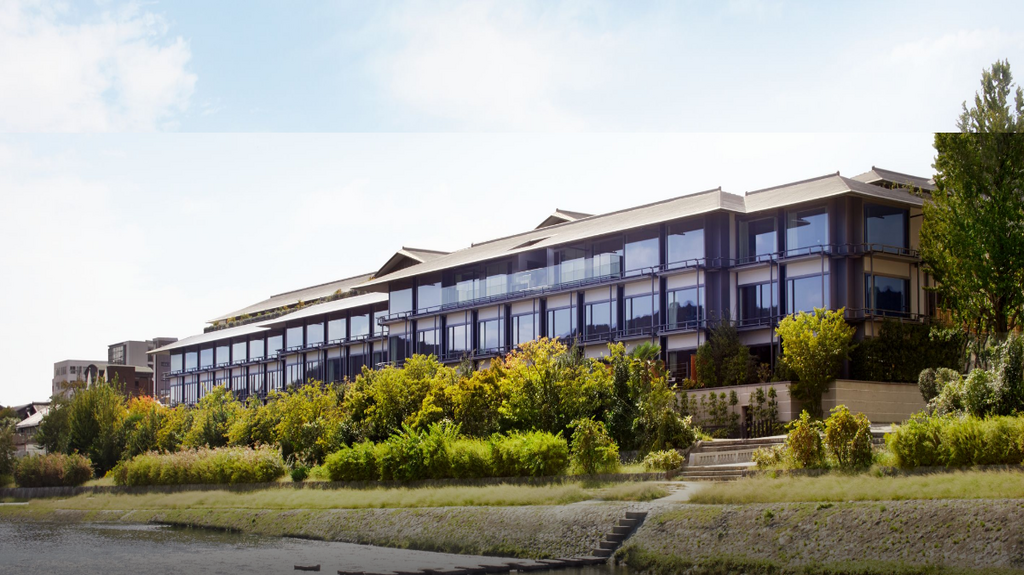
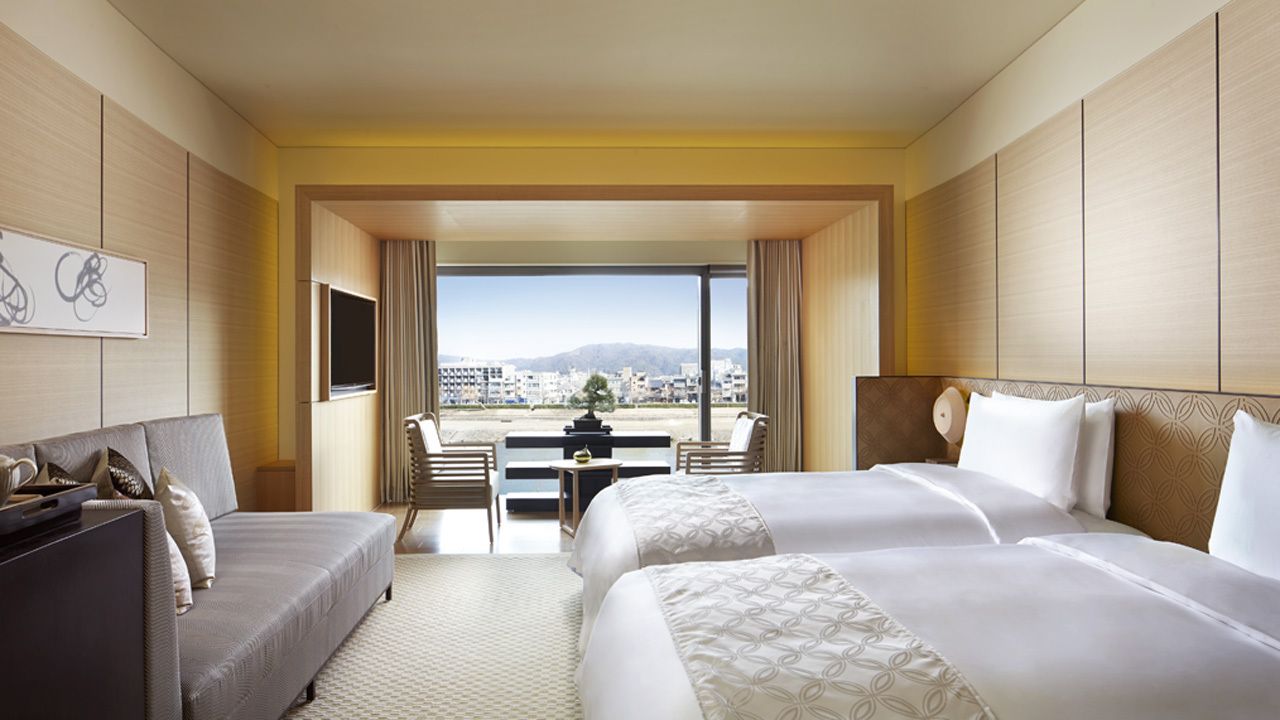
We feel the 134-room luxury Ritz-Carlton Kyoto to be our favorite Western 5-star property in Kyoto. Though we are not always fans of The Ritz-Carlton brand (preferring a less-pretentious, more understated style of luxury), the property’s rectangular, low-slung property has definitely piqued our interest. Ideally situated along the Kamogawa River, The Ritz features glass floor-to-ceiling windows with views of the Higashiyama Mountains. The property was built on a site adored by 17th-century Japanese nobility and replicates the aesthetics of a traditional Meiji House, making its design quite impressive (including a French Haute Patisserie!). Amenities and facilities include four onsite restaurants and bars (including Michelin-starred Tempura Mizuki!), a sleek indoor pool, a serene stone and bamboo pathway, a sweets shop, and a spa offering traditional Japanese wellness treatments as well as Western facial and body massage treatments. Make sure to check out the 409 modern Japanese art pieces displayed around the hotel and take in the peaceful essence of the bonsai tree and garden!
The Ritz-Carlton Kyoto
 With the Hyatt Regency Kyoto having been the only Western 5-star luxury hotel in Kyoto for quite some time, we were excited about the February 2014 opening of the 134-room The Ritz-Carlton Kyoto. Living in a Mies van der Rohe high-rise in Chicago, we feel a particular affinity to the Hyatt Regency’s simple, clean, architectural design. Nevertheless, The Ritz-Carlton’s rectangular, low-slung property ideally situated in the Kamogawa River has piqued our interest. Replicating the aesthetics of a traditional Meiji House, the design and amenities of The Ritz are quite impressive (including a French Haute Patisserie!). Though we are not big fans of the Ritz global brand (prefer AMAN/Peninsula/Mandarin/Four Seasons), we feel the Ritz to be currently the highest quality luxury “western” hotel in Kyoto.
With the Hyatt Regency Kyoto having been the only Western 5-star luxury hotel in Kyoto for quite some time, we were excited about the February 2014 opening of the 134-room The Ritz-Carlton Kyoto. Living in a Mies van der Rohe high-rise in Chicago, we feel a particular affinity to the Hyatt Regency’s simple, clean, architectural design. Nevertheless, The Ritz-Carlton’s rectangular, low-slung property ideally situated in the Kamogawa River has piqued our interest. Replicating the aesthetics of a traditional Meiji House, the design and amenities of The Ritz are quite impressive (including a French Haute Patisserie!). Though we are not big fans of the Ritz global brand (prefer AMAN/Peninsula/Mandarin/Four Seasons), we feel the Ritz to be currently the highest quality luxury “western” hotel in Kyoto.
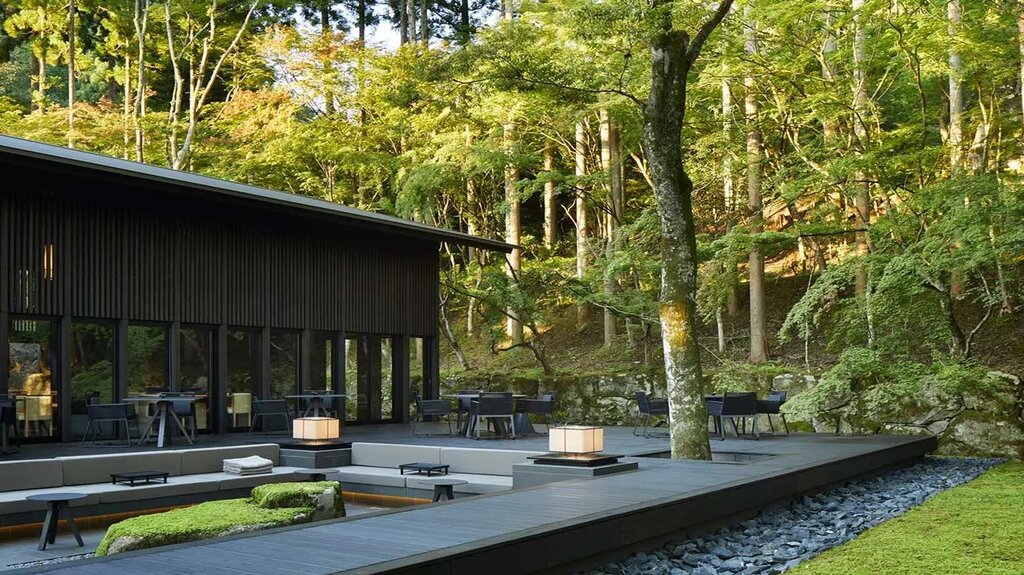
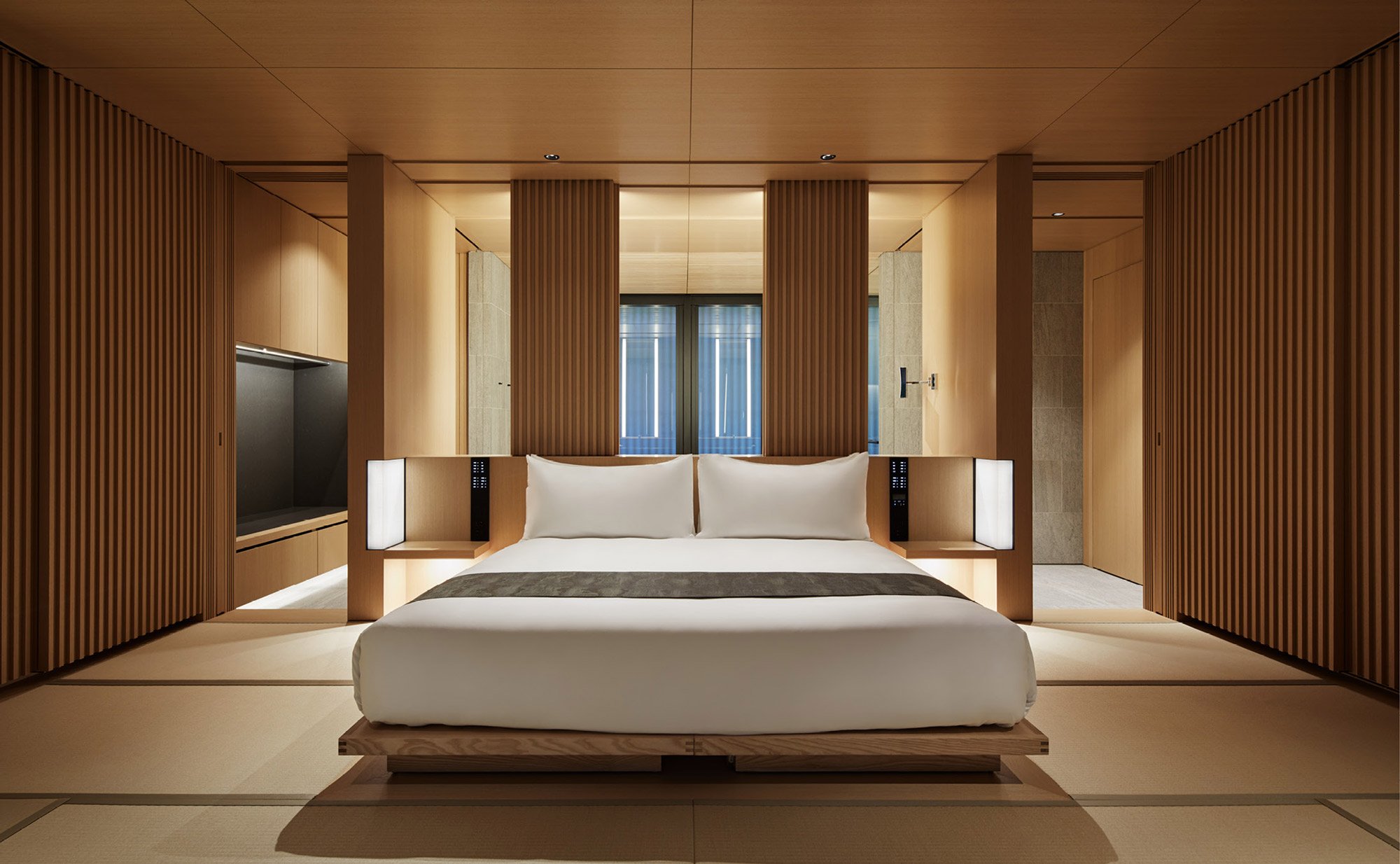 With Kyoto being our favorite city in Asia, we are most excited about the 24-room Aman Kyoto opened back in November 2019. The 80-acre site includes 72 acres of native forest and eight acres of traditional Japanese gardens. We are particularly impressed with the property’s location in the Takagamine district, walking distance to Kinkaku-ji (Golden Temple)! The property features spacious and light-filled interiors, similar to traditional ryokans; natural hot springs; and spectacular dining celebrating the unique culinary traditions of Japan using the finest local produce. With large floor-to-ceiling windows, the outside is brought in, allowing for a complete escape in total luxury.
With Kyoto being our favorite city in Asia, we are most excited about the 24-room Aman Kyoto opened back in November 2019. The 80-acre site includes 72 acres of native forest and eight acres of traditional Japanese gardens. We are particularly impressed with the property’s location in the Takagamine district, walking distance to Kinkaku-ji (Golden Temple)! The property features spacious and light-filled interiors, similar to traditional ryokans; natural hot springs; and spectacular dining celebrating the unique culinary traditions of Japan using the finest local produce. With large floor-to-ceiling windows, the outside is brought in, allowing for a complete escape in total luxury.
Aman Kyoto
 With Kyoto being our favorite city in Asia, we are most excited about the 24-room Aman Kyoto opened back in November 2019. The 80-acre site includes 72 acres of native forest and eight acres of traditional Japanese gardens. We are particularly impressed with the property’s location in the Takagamine district, walking distance to Kinkaku-ji (Golden Temple)! The property features spacious and light-filled interiors, similar to traditional ryokans; natural hot springs; and spectacular dining celebrating the unique culinary traditions of Japan using the finest local produce. With large floor-to-ceiling windows, the outside is brought in, allowing for a complete escape in total luxury.
With Kyoto being our favorite city in Asia, we are most excited about the 24-room Aman Kyoto opened back in November 2019. The 80-acre site includes 72 acres of native forest and eight acres of traditional Japanese gardens. We are particularly impressed with the property’s location in the Takagamine district, walking distance to Kinkaku-ji (Golden Temple)! The property features spacious and light-filled interiors, similar to traditional ryokans; natural hot springs; and spectacular dining celebrating the unique culinary traditions of Japan using the finest local produce. With large floor-to-ceiling windows, the outside is brought in, allowing for a complete escape in total luxury.

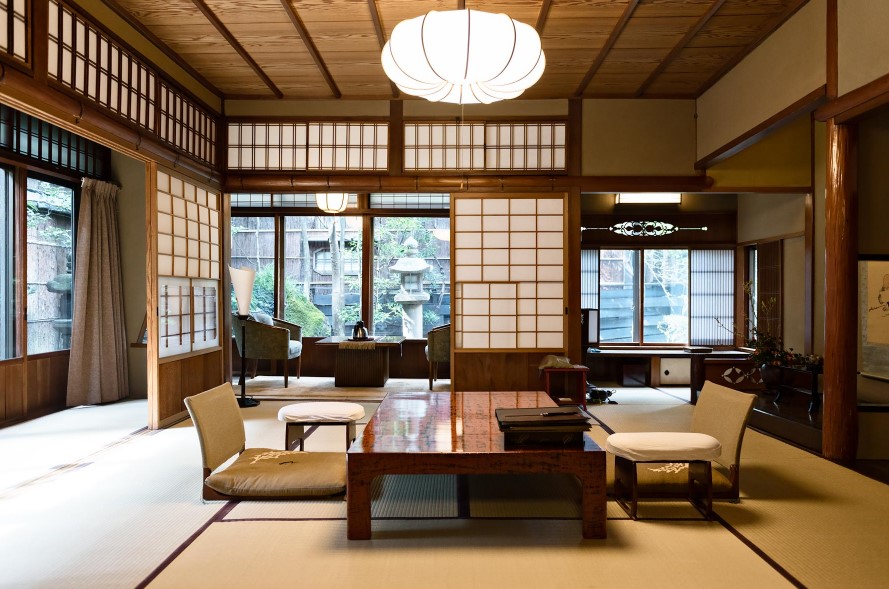 Like Tawaraya Ryokan, Hiiragiya is considered among Japan’s most noteworthy and famous ryokans. Improbably, two of the most famous luxury ryokans in all of Japan stand directly across from each other! A stay at Hiiragiya or Tawaraya represents a complete immersion into traditional Japanese culture. Enclosed in a traditional sukiya style wooden structure, Hiiragiya was conceived in 1818 when Hiiragiya, a seafood dealer, began providing accommodation to traveling merchants. Later, Hiiragiya welcomed many members of the imperial family including writers, governing officials, and international celebrities.
Like Tawaraya Ryokan, Hiiragiya is considered among Japan’s most noteworthy and famous ryokans. Improbably, two of the most famous luxury ryokans in all of Japan stand directly across from each other! A stay at Hiiragiya or Tawaraya represents a complete immersion into traditional Japanese culture. Enclosed in a traditional sukiya style wooden structure, Hiiragiya was conceived in 1818 when Hiiragiya, a seafood dealer, began providing accommodation to traveling merchants. Later, Hiiragiya welcomed many members of the imperial family including writers, governing officials, and international celebrities.
Hiirigiya Ryokan

Similar to Tawaraya Ryokan (just across the alleyway), Hiiragiya is considered among the most noteworthy and famous ryokans in all of Japan. A stay at Hiiragiya represents a complete immersion into traditional Japanese culture. Enclosed in a traditional sukiya-style wooden structure, Hiiragiya was conceived in 1818 when Hiiragiya, a seafood dealer, began providing accommodation to traveling merchants.
Later, Hiiragiya welcomed many members of the imperial family including writers, governing officials, and international celebrities. Proprietress Akami Nishimura only modestly acknowledges the many celebrities and world leaders who have stayed here (including Charlie Chaplain many decades ago). We give an A+ to both the Tawaraya and Hiiragiya, although we feel Hiiragiya is perhaps more accommodating and open to Western eccentricities.
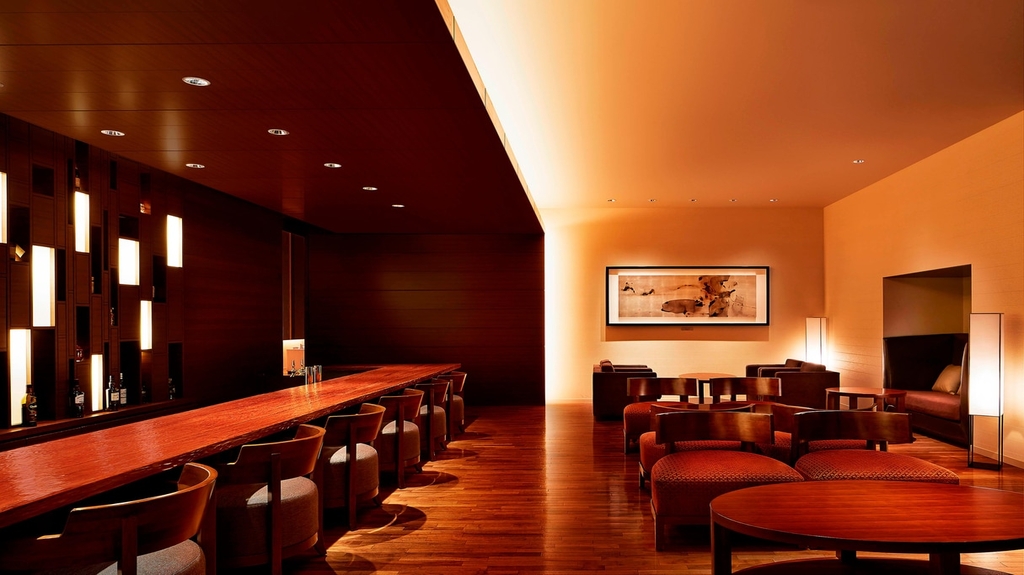
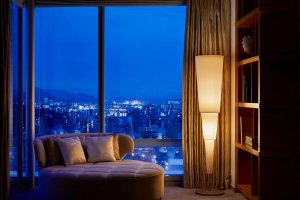 Among the many 5-star luxury hotels we have used throughout the world, I cannot recall us staying at a Sheraton. However, we were most impressed with our recent visit to the relatively new 238-room Sheraton Grand Hiroshima, beyond a doubt the finest hotel in Hiroshima. Guests should enjoy the heartfelt, friendly staff and the updated room amenities.
Among the many 5-star luxury hotels we have used throughout the world, I cannot recall us staying at a Sheraton. However, we were most impressed with our recent visit to the relatively new 238-room Sheraton Grand Hiroshima, beyond a doubt the finest hotel in Hiroshima. Guests should enjoy the heartfelt, friendly staff and the updated room amenities.
Sheraton Grand Hiroshima
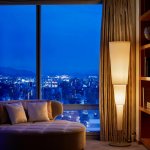 Among the many 5-star luxury hotels we have used throughout the world, I cannot recall us staying at a Sheraton. However, we were most impressed with our recent visit to the relatively new 238-room Sheraton Grand Hiroshima, beyond a doubt the finest hotel in Hiroshima. Guests should enjoy the heartfelt, friendly staff and the updated room amenities.
Among the many 5-star luxury hotels we have used throughout the world, I cannot recall us staying at a Sheraton. However, we were most impressed with our recent visit to the relatively new 238-room Sheraton Grand Hiroshima, beyond a doubt the finest hotel in Hiroshima. Guests should enjoy the heartfelt, friendly staff and the updated room amenities.
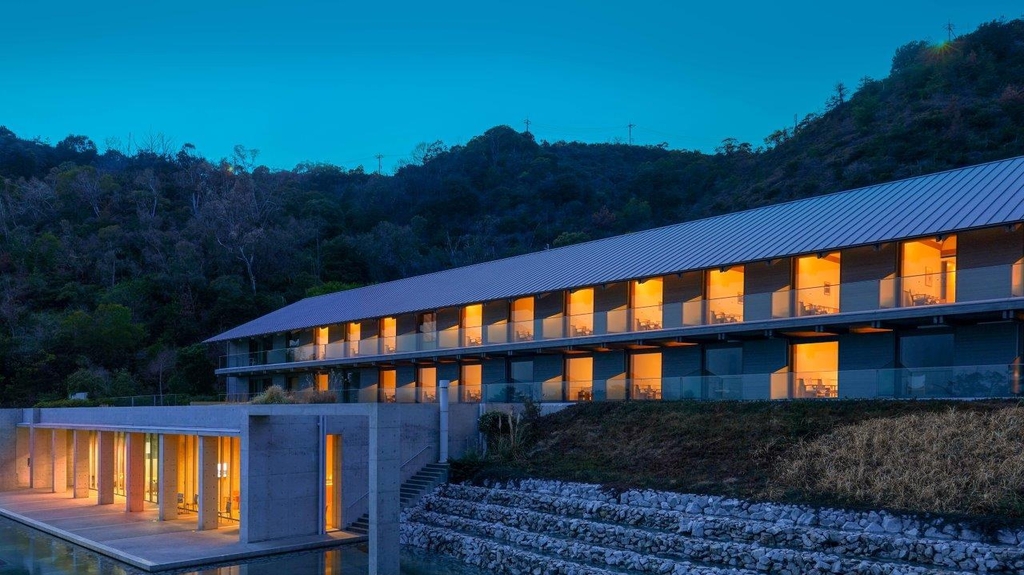
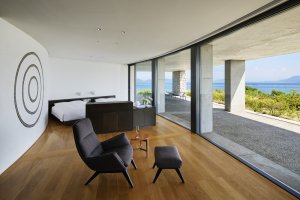 The central lodging facility within “Benesse Art Site Naoshima” consists of four buildings: the Museum (10 rooms) allows close contact with the artworks both in a public exhibition space and in each guestroom; Oval (six rooms – our favorite!), offers beautiful panoramic views of the Seto Inland Sea and is connected to the museum by a monorail; Park (41 rooms) looks out to the green lawn with open-air artworks to the ocean and the mountains of Shikoku on the far shore, and contains an exclusive lounge, a shop, and Spa; and Beach (eight suites), located on the shoreline with suites only, provides beautiful views of the Seto Inland Sea. The Benesse House spa, La Villa, offers a variety of rejuvenating spa treatments.
The central lodging facility within “Benesse Art Site Naoshima” consists of four buildings: the Museum (10 rooms) allows close contact with the artworks both in a public exhibition space and in each guestroom; Oval (six rooms – our favorite!), offers beautiful panoramic views of the Seto Inland Sea and is connected to the museum by a monorail; Park (41 rooms) looks out to the green lawn with open-air artworks to the ocean and the mountains of Shikoku on the far shore, and contains an exclusive lounge, a shop, and Spa; and Beach (eight suites), located on the shoreline with suites only, provides beautiful views of the Seto Inland Sea. The Benesse House spa, La Villa, offers a variety of rejuvenating spa treatments.
Benesse House Hotel
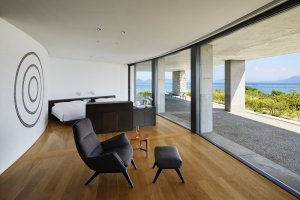 The central lodging facility within “Benesse Art Site Naoshima” consists of four buildings: the Museum (10 rooms) allows close contact with the artworks both in a public exhibition space and in each guestroom; Oval (six rooms – our favorite!), offers beautiful panoramic views of the Seto Inland Sea and is connected to the museum by a monorail; Park (41 rooms) looks out to the green lawn with open-air artworks to the ocean and the mountains of Shikoku on the far shore, and contains an exclusive lounge, a shop, and Spa; and Beach (eight suites), located on the shoreline with suites only, provides beautiful views of the Seto Inland Sea. The Benesse House spa, La Villa, offers a variety of rejuvenating spa treatments.
The central lodging facility within “Benesse Art Site Naoshima” consists of four buildings: the Museum (10 rooms) allows close contact with the artworks both in a public exhibition space and in each guestroom; Oval (six rooms – our favorite!), offers beautiful panoramic views of the Seto Inland Sea and is connected to the museum by a monorail; Park (41 rooms) looks out to the green lawn with open-air artworks to the ocean and the mountains of Shikoku on the far shore, and contains an exclusive lounge, a shop, and Spa; and Beach (eight suites), located on the shoreline with suites only, provides beautiful views of the Seto Inland Sea. The Benesse House spa, La Villa, offers a variety of rejuvenating spa treatments.
Request Custom Itinerary
Location
Overview
| Temperature |
|---|
| Highs: High 70’s |
| Lows: Mid 60’s |
| Area |
|---|
| 377,864 SQ KM |
| 145,894 SQ MILES |
| Capital |
|---|
| Tokyo |
| Population |
|---|
| 125.9 Million |
| Language |
|---|
| Japanese |
| Currency |
|---|
| Japanese Yen |


